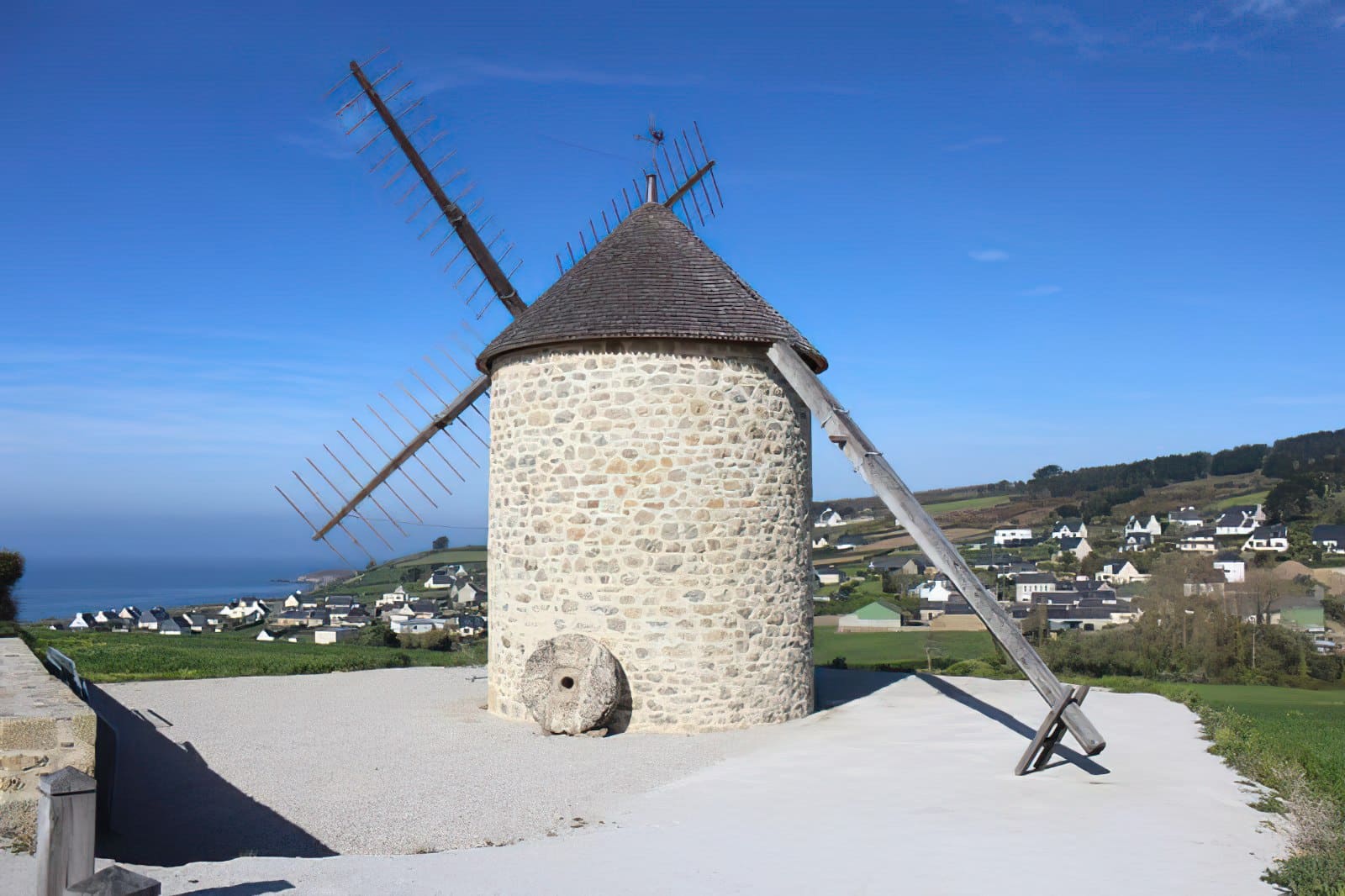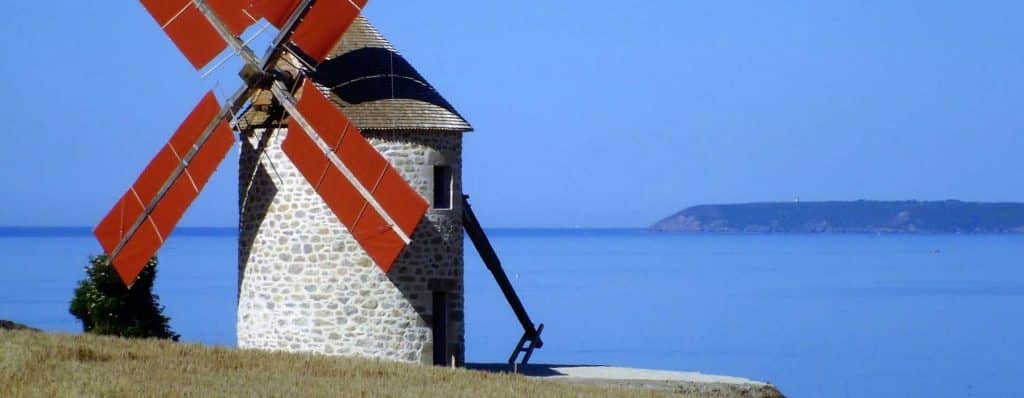
The Luzéoc mill
Telgruc-sur-Mer
In the 19th century, the Crozon peninsula boasted around a hundred windmills and several dozen water mills.
In the commune of Telgruc-sur-Mer alone, six windmills existed at that time. In 2012, only two ruins remained: Moulin de Quinivel (on the Tal-Ar-Groas Châteaulin road) and Moulin de Luzéoc.
For the EOST association(Etudes Ouvertes Sur Telgruc), chaired by Jean-Pierre Quémener, the exceptional location of this last mill (overlooking the large beach of Trez-Bellec) was one of the factors that weighed in favor of its restoration. Come and discover this exceptional mill during your stay in a 4-star campsite on the Crozon peninsula, at Panoramic Sites et Paysages.
History of the mill
The history of the Luzéoc mill (originally known as Pen ar Stang, the home of its first owners) began between 1832 and 1836.
Research shows that it was built around 1832/1836 by Jean Marchadour, husband of Louise Labasque, who lived in Penn-ar-Stank (1st appearance of the Marchadour family in the 1836 Telgrucian population census).
On February 26, 1872, it was sold to Jean Alix, miller and owner of the Caon watermill, married to Barbe Marie Boussard.
On January 8, 1887, their daughter Marguerite Alix, wife of Hervé Carn, sold the mill to Noël Kéravel, husband of Marie-Anne Trétout, of Penn-ar-Stank, as indicated by the inscriptions on the door jambs: K/AVEL Noël to the south and 1887 to the north.
Included in the sale are: a pair of scales with a wooden pan, two iron weights weighing twenty kilograms each, a ten-kilogram weight, a five-kilogram weight, a one-kilogram weight and a five-hundred-gram weight, a lever, two hammers, a large hammer, a wooden bowl and a barrel, eight cloths and the planks under the millstone.
Noël Kéravel (1842 – 1924) worked as a miller until the First World War. His son Yves, born in 1884, continued the milling business, but was killed on October 20, 1915, leaving his son Noël, born on July 31, 1914, as his sole heir.
The mill deteriorated over time, losing its wings. Its unkempt thatched roof began to suffer from the elements in the 1920s (see photo Jos Le Doaré), and by the 1950s all that remained was the tower.
In 1972, the mill plot known as ” ar veil aël ” was bought by the Nédelec-Jaffredou family, who camped there in summer. The building, never maintained, has fallen into disrepair over time. The new owners regularly knocked down any stones that threatened their safety.
Fortunately, these stones were either stored in what remained of the tower or used to build a low wall around the ruin’s grounds.
Mill features
The tower mill is 5.8 m high, with an internal diameter at the base of 3.85 m (4.05 m on the1st floor) and walls of 85 cm (65 cm on the1st floor).
Its wingspan is 13.15 m, and is made up of 2 yards fixed offset to the drive shaft, to which scions have been attached, each with 14 rungs.
The wing carries 2 x 5×1 m sails made from nautical canvas by La Camarétoise sailmakers.
To avoid having to climb on the wings to attach them, we asked Gilles Morio to come up with a system for raising them from the ground. He has installed a very satisfactory halyard system.
Reconstruction
In 2012, when the land was put up for sale, the EOST association encouraged the commune to acquire it with a view to restoring the mill. The state of the ruin made it impossible to start from scratch. As a result, she was completely devastated.
Thus, the reconstruction of the mill could be envisaged, exclusively with original stoneswith the support of the association des amis des moulins du Finistère (headquartered in Daoulas and chaired by Benoit Huot), the Fondation du patrimoine (the subscription operation will be supported by 146 donors, almost half of whom are non-telgrucians), the Conseil régional de Bretagne and the Département du Finistère.
Following a call for tenders, the tower contract was awarded to Mein Breizh, a company specializing in renovation, and the joinery contract (cap, milling system, wings, etc.) to Gilles Morio, from Plérneuf in the Côtes-d’Armor region, a carpenter and moulder, pupil and successor of the late Jean Peillet. Excluding architects’ fees, the total contract value was less than €190,000. Funding was provided by grants from the Conseil Régional de Bretagne and the Département du Finistère (€83,000 in total), donors (€40,000), a contribution from the Fondation du Patrimoine (€7,000) and the balance by the commune.

The reconstruction work began on December 16, 2015, and the works were handed over on July 10, 2016 for an inauguration on July 16.
Since the site was opened to the public, the EOST association, in charge of guided tours, had recorded over 2,000 visitors by the end of August, including a Dutch miller who has transformed his 7-storey mill into a museum.
A living testimony to the history of Telgruc-sur-Mer, the Luzéoc mill has become the jewel in the crown of the town’s heritage, as well as a formidable attraction.
